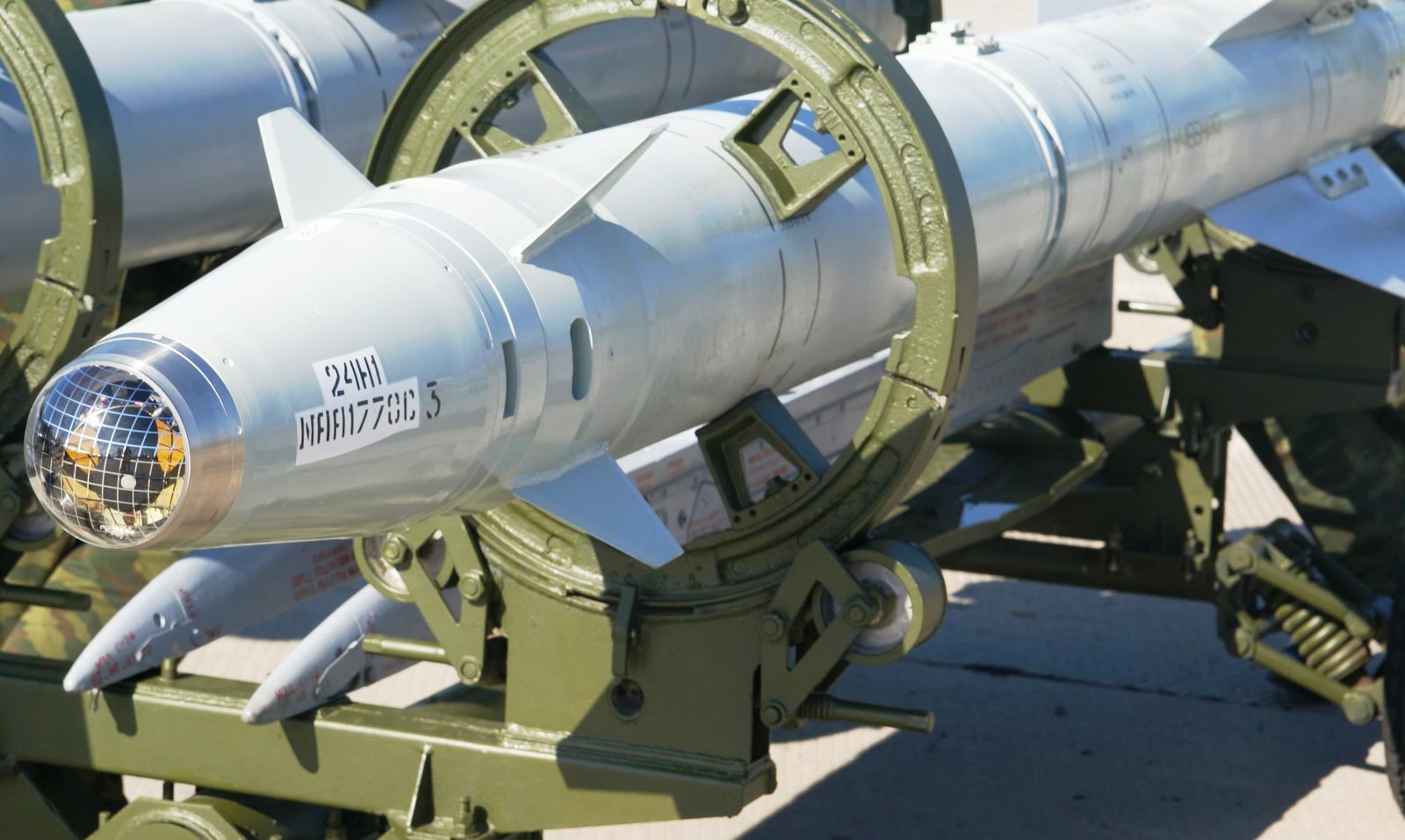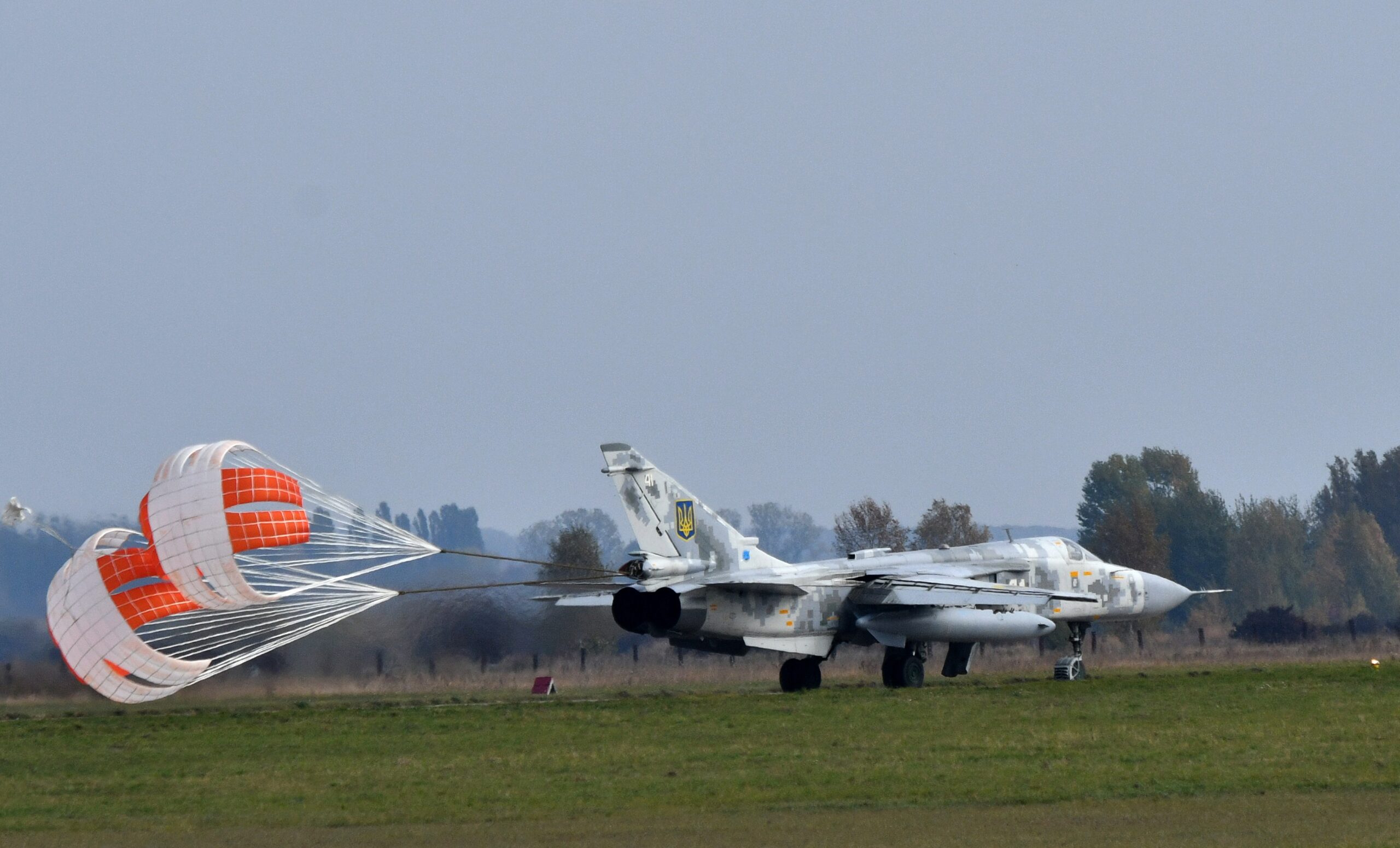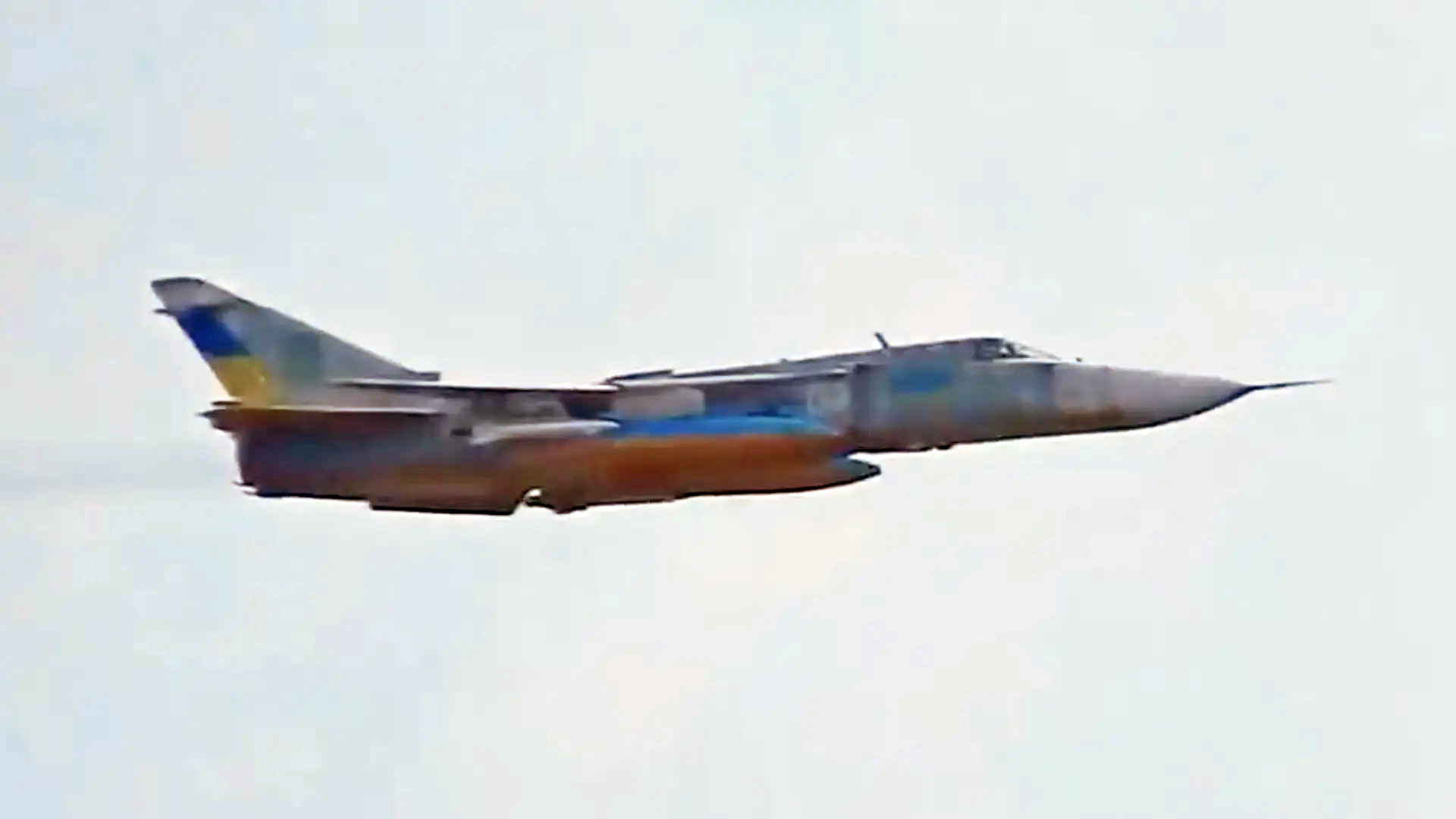Comparatively rarely seen in the air war over Ukraine, at least some of Kyiv’s Sukhoi Su-24M Fencer strike aircraft are still very much active, according to a recently released video. The swing-wing warplanes, which are also flown by Russia in the conflict, provide Ukraine with a fast-jet precision-attack capability that’s notably absent from the more frequently seen MiG-29 Fulcrum and Su-27 Flanker fighter jets, and which is evidenced by the air-to-ground missiles seen in the video. Indeed, this is apparently the first time that we’ve seen a Ukrainian Air Force Su-24 carrying any kind of precision munition since the war began.
The video of the Su-24M Fencer-D began to circulate widely yesterday. Immediately obvious are the yellow, blue, and what appears to be darker yellow paint applied on the rudder, huge 3,000-liter external fuel tanks, and the bottom of the fuselage. Similar high-visibility identification markings, which are presumably intended to prevent friendly fire incidents, especially when flying at low level, as here, are becoming increasingly common on Ukrainian Air Force aircraft.
Another very low-level pass by a (reportedly Ukrainian) Su-24:
Most interestingly, however, are the two air-to-ground missiles carried on the swiveling outer pylons on the moving part of the wing. The weapons are from the Kh-25 series, a Soviet-era family of modular weapons available with a variety of different seeker heads. The missiles appear to be the Kh-25ML, known in the West as AS-10 Karen, which uses a semi-active laser seeker.
Some commenters have suggested the missiles are examples of the Kh-25MR, which uses a primitive radio command guidance package in the missile’s rear. However, this seems far less likely, given the Kh-25ML being much more widely available and also a lot more practical to use in combat.


The missiles certainly appear not to have the elongated radomes associated with the Kh-25MP (AS-12 Kegler), which is an anti-radiation missile with a passive radar seeker to target the radars of enemy surface-to-air missile systems.
Just over 12 feet long, the Kh-25ML has a maximum range of 6.2 miles, flies at a maximum speed of over 1,900 mph and has a launch weight of 650 pounds, of which the high-explosive warhead comprises almost 200 pounds.

The Kh-25 series missiles are, by now, fairly antiquated. The first examples were delivered in 1982 and after the collapse of the Soviet Union, only small batches were completed before production wound up entirely in 1997. However, with a reported total of around 25,000 Kh-25M missiles manufactured, significant stocks clearly remain, including in Ukraine.
The Kh-25ML has also been seen periodically on Russian Su-24Ms, although not, so far, in Ukraine. Russian Fencers have, however, been noted carrying these missiles during the Kremlin’s intervention in the Syrian Civil War.
It may be the ubiquity of the Kh-25M series that saw it being used in the mission seen in the video, since, in the recent past, at least, Ukraine has had more capable precision-guided munitions available to its Su-24 fleet. These include the laser-guided KAB-1500L bomb and laser-guided Kh-29L (AS-14 Kedge) missile, as well as the TV-guided KAB-500Kr bomb and Kh-29T missile. Anti-radiation missiles, for the destruction of enemy air defense systems, have also been available in the past, including the Kh-58 (AS-12 Kilter) and, reportedly, the Mach 3.5-capable Kh-31P (AS-17 Krypton).
In this instance, it’s unclear why the Kh-25ML would have been chosen. It could reflect the depletion of other precision-guided munition stocks, or it could be that a smaller weapon was preferred, based on the target type. Perhaps it was a moving target, which could have been engaged using the laser guidance system. Regardless, the Su-24M’s internal Kayra-24 laser/TV daytime sight includes a target designator to ‘paint’ the target for the missile’s laser seeker.
The Ukrainian Air Force also has recent live-fire training experience with the Kh-25ML, based on this in-cockpit video reportedly from last October:
At least 11 Su-24Ms have been confirmed as destroyed in the fighting so far, based on open-source data. This is an especially alarming statistic considering that some reputable Western sources reported a total fully operational fleet of only 12 of these aircraft before the current conflict.
It’s likely that this last number is an underestimation, although only one tactical aviation brigade flew Fencers, both Su-24Ms for strike, and Su-24MR reconnaissance versions, based at Starokostyantyniv. Typically, a pre-war brigade had two squadrons with 10-12 aircraft each, although some brigades had only a single squadron.
Regardless, the Su-24 fleet has long been small in size, with reportedly only six Su-24Ms and five Su-24MRs operationally ready between 2006 and 2010. The situation had improved somewhat by 2014, the same year that the Crimean peninsula was annexed by Russia and fighting began in the eastern Donbas region. In 2014, the operational fleet reportedly comprised 13 Su-24Ms and seven Su-24MRs.
Another low-level Ukrainian Su-24 pass, this time during the 2014 campaign in the Donbas:

The Clear Sky 2018 exercise held at StarokostyantynivAir Base in Ukraine, which included the resident Su-24s:

Prior to the latest invasion, efforts were underway to modernize the Su-24MR reconnaissance jets, in particular, while plans had been announced to integrate an air-launched variant of the Neptun anti-ship missile on the Su-24M, although this effort is not understood to have made any realistic progress.
In April this year, with the war raging, Ukrainian Air Force MiG-29 pilot “Juice” lamented the general lack of Su-24s but noted that they had been “very busy.”
At the same time, Su-24s have proven much more expensive and complex to repair than the other jets, which likely also explains their relatively low profile so far.

Problems are compounded by a lack of spares, most of which are only produced in Russia, in contrast to the MiG-29 and Su-27, for which parts have historically been able to be sourced locally.
With Ukraine now increasingly taking the fight to the Russian Armed Forces, with counteroffensives in the east and in the south, as well as a spate of apparent attacks on objectives within Russia and in Russian-occupied Crimea, the Su-24M’s capabilities would likely now be highly prized.
Exactly where the missile-armed Su-24M was flying, and what kind of mission it was undertaking, are unknown, although unconfirmed reports suggest it was somewhere in the east of the country, where Ukrainian forces are pushing back against Russian gains made early in the conflict, especially around Kharkiv and Sloviansk.
Clearly, however, even with elderly guided missile armament, the few active survivors of Ukraine’s Su-24 fleet still have a role to play in the ongoing air war.
Contact the author: thomas@thedrive.com
